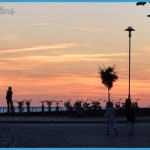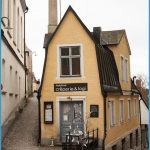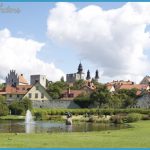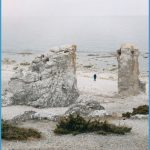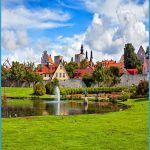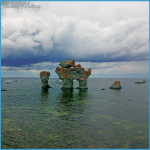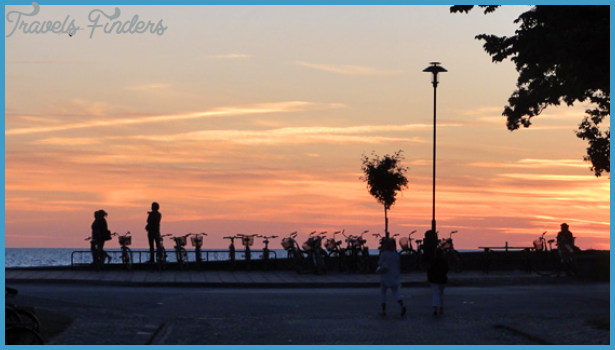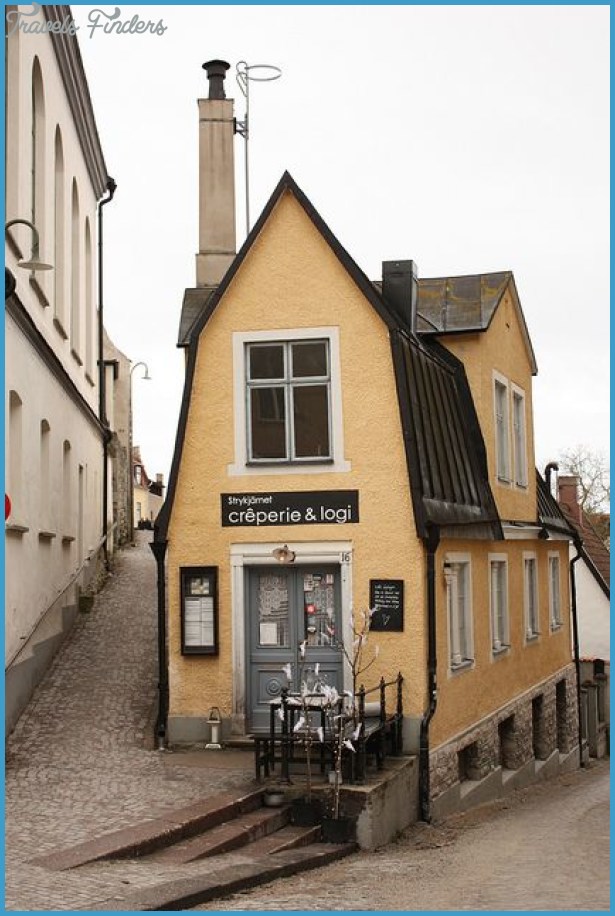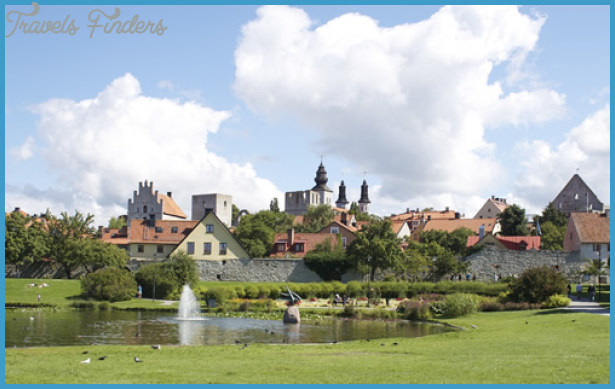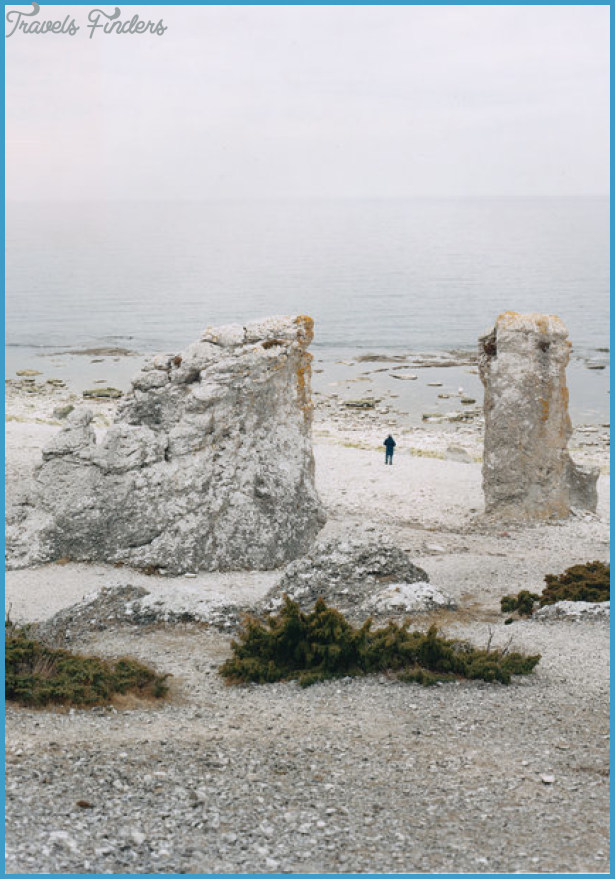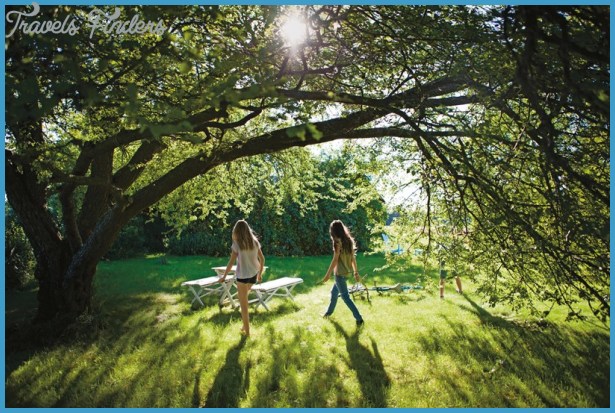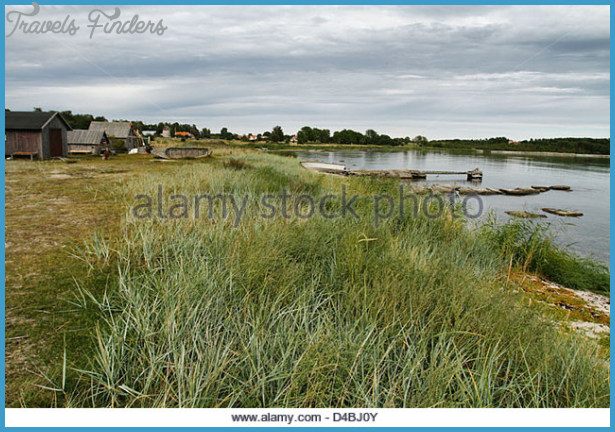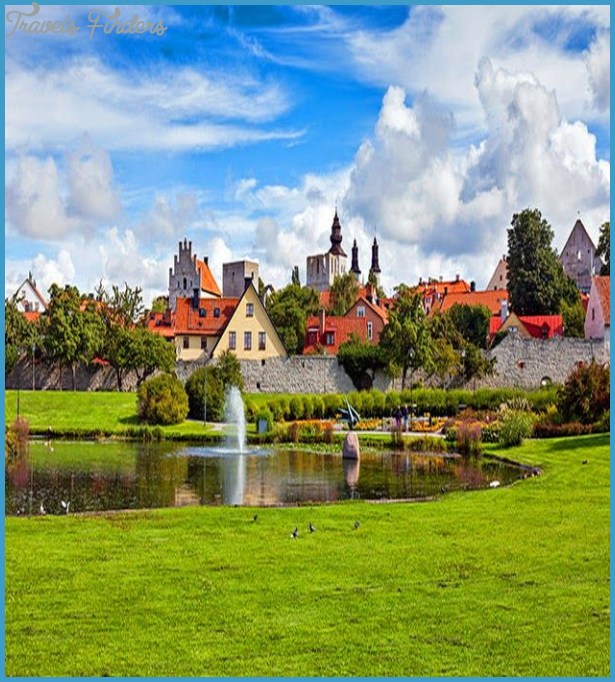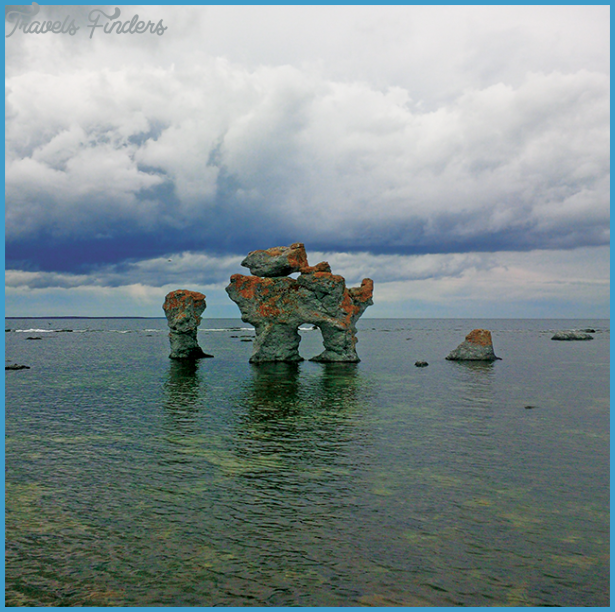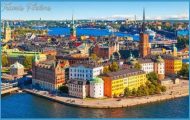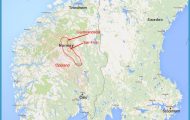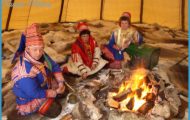Miracle play, Visby (Gotland)
The Labska Grand leads to the market square. (Stora Torg), on the S side of which are the ruins of St Catherine’s Church (St Karin), built about 1230, which originally belonged to a Franciscan friary. To the N, in St Hansgatan, are the ruined churches of Drotten (ortheTrinity) and St Lars (13th c.), with a massive towers which served for purposes of defence. To the W, uphill, stands St Mary’s Church, the Cathedral, built by the Hanseatic League (consecrated 1 225; much altered in later centuries; restored 1899-1907 and 1945), the only one of the old churches of Visby which is still in use; in earlier times it was used as a warehouse and as a place of safe keeping for valuables. The church has three towers, a massive square one on the W front and two more slender octagonal towers at the E end. The S chapel commemorates the burgomaster of Visby, Swerting, executed in 1350. The church contains a fine carved pulpit of walnut wood and ebony from Lubeck (1 684) and a 13th c. font of red Gotland marble.
From St Mary’s the Norra Kyrkogata runs N to the ruins of the Romanesque Church of the Holy Ghost (Helgeandskyrka), which dates from the first half of the 13th
This two-storeyed octagonal structure, of a type unusual in Scandinavia, shows the influence of the double churches of Germany. There was probably a bridge linking the upper storey ofthe church with a hospital which stood close by. From here a side street passes the remains ofthe little 15th c. St Gertrude’s Chapel and comes to the ruined St Nicholas’s Church, the largest in Visby, where the play Petrus de Dacia is performed. The church, which originally belonged to a Dominican monastery, was begun about 1230 and was destroyed by Lubeck forces in 1525. Beautiful rose window in gable. Tothe S, among houses, are the remains of the Romanesque St Clement’s Church, built in the mid 13th c. Excavations have brought to light the foundations of three other churches, the oldest of which (1 2th was probably one of the earliest stone churches in Visby; fine S doorway. To the right of the church is an old weapon-house, in which the men deposited their arms before entering the church.
On the NW side of the town is the Botanic Garden (Botaniska TradgSrden), at the S end of which are the ruins of St Olof’s Church (Romanesque, c. 1 200). A little way SE of Donnersplatsen are the scanty remains of two adjoining churches, St Per and St Hans. Excavations in 1917 revealed the foundations of three other churches below St Per, the older and smaller of the two.
SURROUNDINGS of Visby. A very attractive walk leads through the Norderport and past the ruins of St Goran’s Church (13th c.), which originally belonged to a leper hospital, tothe Galgenberg (Gallows Hill: 30 minutes), a medieval place of execution with three tall stone pillars 6 m (20 ft) high (magnificent view of the town and the sea). At the foot ofthe hill to the N is the Trojeborg, a stone maze which was probably a very ancient cult site. Its name recalls the ancient Roman Troy game (Trojae ludus a sham fight on horseback). To the SE of the town by way of the Osterport is the Korsbetning (Cross Meadow), with the ruins of Solberga monastery (1246) and Valdemar’s Cross (Valdemarskors: 2-5 m (8 ft) high, with a Latin inscription), at the burial place of the Gotland peasants who fell in 1361. Excavations in 1905 brought to light between 300 and 400 skeletons together with arms and armour. 4 km (2i miles) SW, near the camp site and holiday villages of Kneippby and the Villa Villekulla, is a children’s playground with numerous delights. 4 km (2J miles) farther on from a rugged crag, the Hogklint (45 m 148 ft), there are extensive views of the sea and the town of Visby; below the top are the limestone spur known as Getsvaltan and a cave. Nearby is the Villa Fridhem, which belonged to Prince Oskar Bernadotte (boarding school), with a large park. 4 km (2imiles) NEof Visby on a road skirting the beach we reach the popular resort of Snackgardsbad.

